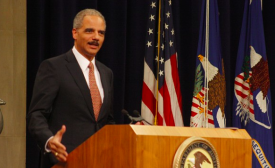public diplomacy

Sports diplomacy is often presented as a slam dunk approach for building relations across political divides. Last week veteran NBA star Dennis Rodman took a shot at “basketball diplomacy” in North Korea and showed how professed good intentions can go afoul. It also demonstrated the deft role of the media as the tables turned on the NBA players following a confrontational interview between Rodman and CNN New Day anchor Chris Cuomo. The NBA players not only lost control of the ball but became the ball on CNN’s court.
Global media in public diplomacy has increasingly proved its usefulness in recent years. Many governments have competitively engaged in a war of public diplomacy through media to make their countries look attractive and friendly to foreigners while also setting the stage for others to understand their positions in the international arena. The success or failure of public diplomacy through media, however, can only be judged by its intended audience.
It’s a new year for public diplomacy, and one that’s likely to be filled with opportunities and challenges. With this in mind, I have assembled a top 10 list for public diplomacy priorities for 2014. While by no means serving as a complete list of all the important issues facing U.S. public diplomacy, it is a reflection of the numerous discussions I have held with officials, practitioners, and academics over the past year.
For those who missed the “Voldemort Wars” between the Chinese and Japanese ambassadors to the UK this past week, China’s ambassador Liu Xiaoming, in a piece in The Telegraph, compared Japan’s militarism to Lord Voldemort — the same He-Who-Shall-Not-Be-Named from the Harry Potter series.

The heated debate surrounding NSA leaker Edward Snowden usually revolves around two extreme positions: Some consider him a hero and a whistle-blower worthy of clemency, while others consider his acts treasonous and believe he should be subject to the harshest punishment in our penal system.
Ironically, that very same penal system makes getting Snowden back to the United States nearly impossible.
2014 could be the year of public diplomacy, particularly throughout the Middle East where citizens continue to exercise enormous influence over the direction of events on the ground, from Iraq to Syria, and from Israel to the West Bank. Public opinion in the U.S. matters, as does public opinion “of” the United States around the world in an interdependent world.
I received a letter from the U.S. State Department last week. It was from a program officer in the office of International Visitors thanking me for hosting three Chinese journalists who were visiting the United States as part of the State Department’s Edward R. Murrow exchange program. It was a very nice thank-you note. The last line read: “Your generosity and kindness made a lasting, positive impression, helping advance the cause of America’s public diplomacy effort.”
At the end of the year, we tend to look back and think of what was memorable or noteworthy about the 12 months past. There’s a cliché about lists – especially lists of the best – of whatever. Not to be outdone, we thought it a good idea to try to assemble a list of the best public diplomacy actions, ideas, programs or decisions of 2013.







